The modern Food Waste Recycling Machine is a new and innovative way to recycle food waste and to produce a pretreated biogas substrate. The machine can depackage food waste, separating it from other waste products. This makes it easier to recycle food waste and reduces the amount of waste that goes to landfill.
The demand for food waste recycling machines is on the rise as the global food industry looks for ways to be more sustainable. These machines are used to depackage food waste, which may then be used to create new products and feed animals.
Depackaging Machines are designed to depackage food waste quickly and efficiently. By using this equipment, food waste can be effectively removed from packaging, without the need for manual labor. This allows for a more efficient and effective way to reduce food waste.
There are a number of factors to consider when choosing a food waste recycling machine, such as the type of food waste that will be recycled, the amount of food waste that needs to be recycled, and the budget.
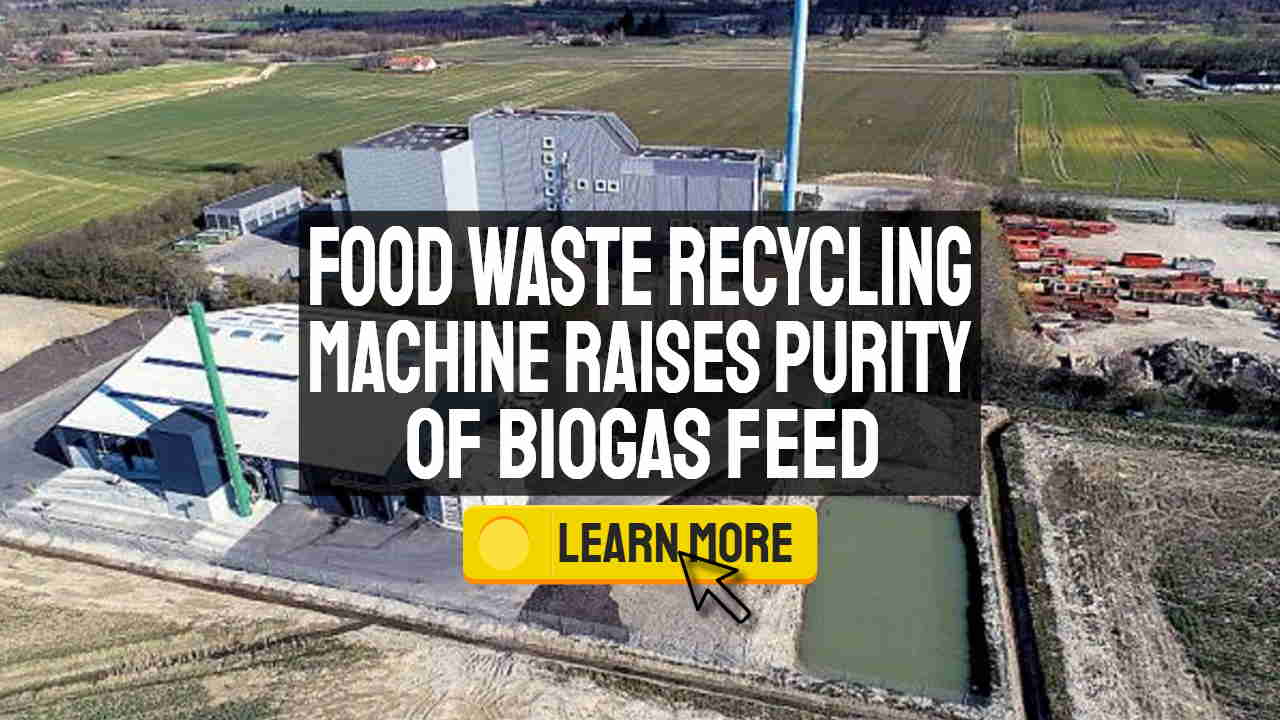
To learn more about the machine and how it works, read on:
The Gemidan ECOGI System (food waste recycling machine)
Gemidan Ecogi’s anaerobic digestion substrate pre-treatment system is effectively a food waste recycling machine for large commercial biogas plants which produces a high-quality pulp-based substrate for digestion/ energy production in AD/ biogas plants.
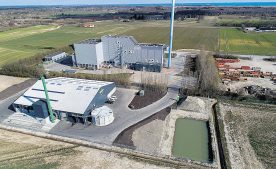
The Gemidan ECOGI system (food waste recycling machine) has a reputation for enhancing the recovery of renewable energy during the anaerobic digestion stage.
But, hidden behind this bland statement is some really exciting news for the biogas industry.
ECOGI says the benefits are in fact twofold:
- It allows the highest possible percentage of the original biomass to be converted into energy.
- And, the nutrient content of the digestate can subsequently be used as a fertilizer on farm land.
In other words their process improves both, the recovery of renewable energy during the anaerobic digestion process and the nutrient content of the digestate by permitting it to be used as a pulp (i.e. fibrous fraction) as a fertilizer on farm land.
That second attribute may not sound that revolutionary, but there has until now been an “elephant in the cupboard” which for the fibrous portion of digestate is seldom discussed.
That “elephant” is that food waste fibrous digestate liquor is very often (in the UK) incinerated because it is not suitable for spreading back on land.
A primary reason for that (after pasteurization) being the presence of:
- small shreds of plastic film,
- pieces of plastic, and also conceivably
- some micro-plastic particles.
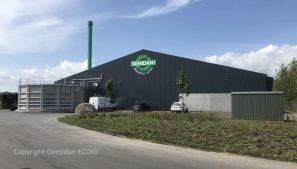
Not only do those plastics look bad, but as we now know (if they get into the environment) these will eventually be washed into rivers and finally into the oceans of the globe. Since the airing of pictures of sea-life entangled in plastic waste, we all know that plastic simply has to be prevented from entering our seas to protect sea-life.
The process also removes grit which if it gets into a biogas digester, is also a major headache for biogas plant operators if it builds-up.
Removing reactor tank grit during pre-treatment it will reduce the risk that a digester has to be taken out of service for biogas tank cleaning. During such cleaning the grit to be manually sucked-out. That's a hugely expensive, dirty and potentially dangerous job. Plus, throughout such digester cleaning there is a total loss of biogas production as well.
Life on earth as we know it, is very likely unsustainable if plastic is allowed to continue to enter the oceans. That's why the following Press Release is so important. Read on to find out more:
Second Pre-treatment Facility for Food Waste for Use in Biogas Production is Now Open
Biogas industry breakthrough at new Gemidan Facility with food waste substrate that is nearly 100% free from non-organic contamination.
Gemidan, whose highly innovative ECOGI technology processes food waste into a high-quality pulp-based substrate for conversion into renewable energy (using AD/biogas), has opened its second pre-treatment facility.
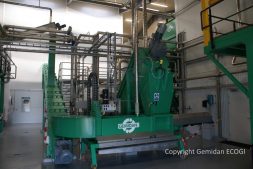
With a processing capacity of 50,000 tonnes, the new facility in Frederikshavn, Denmark (adjacent to a thermal energy-from-waste plant), produces a substrate for AD biogas plants that in terms of plastic contamination is at least three times freer from plastic than already very stringent Danish regulations require.
Rune Nyhuss, Director of Gemidan Group, commented:
“The benefits to the world biogas industry of this ‘ultra-pure’ pre-treatment technology are huge. As any AD operator will tell you, grit from feedstock is an ongoing burden to performance, maintenance and efficiency – with downtime a major headache.”
At Gemidan we have been perfecting our ECOGI technology for over 5 years – and this new facility in Frederikshavn will have far-reaching bottom-line gains, as well as conserving water and
preventing plastics from polluting farmland”.
Nyhuss went on to explain that more than half of the water required for ECOGI to process food waste is from 5,500m³ of harvested rainwater, which will be stored in a lagoon and
treated by special separators to remove any grit or sand.
He added:
“Feedstock for the new facility will come from source-separated household, industry and local business food waste. Inevitably, there will be plastics, glass and metals to contend with, but intensive independent testing during the 5-year development of ECOGI has proved that we achieve a substrate that is near 100%-free (99.96% to be precise) from non-organic physical contamination.
Together with the ongoing success of our first plant in Holsted, Denmark, this is a major breakthrough”.
More information is available at www.ecogi.dk/en/frontpage
Email: tony [ @ ] gemidan.dk or call: 07718 982 610
More About Food Waste
We humans nowadays seem to be born to consume!
We generate lots of waste lots and lots of waste. It is hard to imagine how much waste we throw away.
Every one of us throws about half a kilo of waste into the bin every single day. This is over 200 kg of waste a year.
Climate Change and Carbon Emissions
Climate is changing all over the world. Average and maximum temperatures are rising. Something like 99% of the population of scientists agrees that the emission of greenhouse gases (carbon) generated by human consumption of oil coal and gas is a major cause.
Carbon emissions are out of control right now but can be reduced if all nations take global action.
One possible way to reduce our carbon emissions would be to make better use of organic waste.
Organic Waste to Fuel Vehicles
Organic waste can be used to fuel vehicles, and this is starting to happen through the anaerobic digestion process coupled with further purifying (upgrading) the biogas to make renewable compressed natural gas.
In other words, if we could use all the banana peels coffee grounds, and other foods that you've thrown into the dustbin to fertilize farmland. Instead of just incinerating all this waste the UK could raise the output of renewable CNG fuel. About 1/3 of all UK buses could be fuelled using the current UK output from anaerobic digestion (including food waste).
An added advantage is that renewable CNG is an almost completely clean-burning fuel, so air-pollution problems would be greatly reduced. Buses account for 17% of total transport emissions (ADBA 2018 data).
Biogas Conversion to Biomethane Transport Fuel is Already Happening
The use of biogas to provide transport fuel is by no means a futuristic scenario. In fact, it's already happening.
Gemidan has developed the revolutionary ECOGI system which yields a unique purity of more than 99.9%. This means that the waste can be applied directly as fertilizer on farmland. This happens only after its energy has been extracted for biogas.
In this way the Gemidan ECOGI food waste recycling machine exploits more than 95% of the easily accessible organic material contained in the waste. It's not only that using ECOGI costs less than traditional waste management systems. They are constantly working to make both the system and the technology even more efficient and sustainable.
Implementing the Circular Economy
This is exactly the right technology needed to implement the circular economy.
By making a joint effort society can exploit and reuse the waste in a far better manner than we do today.
What Every One of Us Can Do to Help!
To achieve this however it's important that you sort your waste.
It's actually quite easy. All you have to do is sort it into two categories organic and inorganic, and then follow the instructions given by your local authority.
The organic material which is recyclable is whatever is edible by humans and animals.
It's also okay to throw out packaged foods into organic waste bins.
Chemicals and Medicine
Chemicals and medicine cannot be reused and you must deposit them at your recycling station as you usually do. The exception is clinical waste which the council will normally collect from UK householders when requested.
Textiles and Nappies
Most textiles and nappies aren't organic materials either.
That is why they must be discarded as “residual waste” in the dustbin.
How Does the ECOGI process work?
When the waste arrives at the Gemidan ECOGI food waste recycling machine it's fed into a large rotating centrifuge known as a pulper.
The pulper mixes the waste with water quickly breaking down all the components into a mash-like substance called bio pulp.
From here the bio pulp is sent to a separator which removes the inorganic material and sends the resulting organic mass at a degree of purity above 99.9%, to a biogas facility.
The Waste Recycling Machine: Conclusion – Gemidan ECOGI Biogas Explained
Biogas is a green sustainable alternative to fossil fuels, which is extracted from the bio-pulp using the anaerobic digestion process.
The degassed residual product from the Gemidan ECOGI food waste recycling machine is used as biofertilizer on farmland.
The Gemidan-ECOGI food waste recycling machine is up to 10 times purer than required by Danish Law.
Back at the facility, all the inorganic materials have been rejected and the dry matter is recycled.
Wherever recycling is not viable the waste is sent to incineration.
Incineration converts your waste into district heating benefiting all of us.
It's all about being kind to our environment.
It's simply common sense and green at that!
[Article first published 24 June 2019. Updated December 2022.]


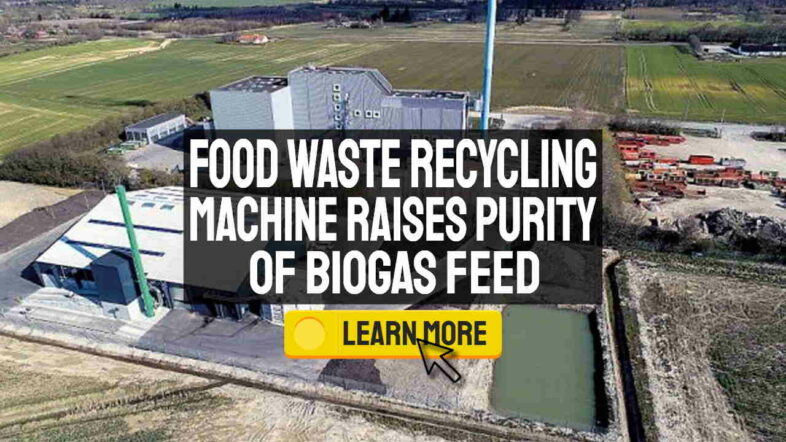

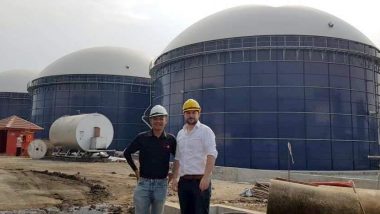

You are out of date. You should check up on your information. You say “if plastic” gets into the environment it will eventually be washed into rivers and finally into the oceans of the globe. IT HAS ALREADY occurred. Check you facts before writing next time.
Do you think it is better to let the leftovers from your homes compost with anaerobic digestion than feed our farm animals?
No. In an ideal world, it would be best to feed farm animals our leftovers.
Unfortunately, experience has shown that feeding farm animals with our leftovers simply isn’t possible because sooner or later those leftovers carry diseases like “Foot and Mouth”, BSE (mad cow disease) and others. The anaerobic digestion plant pasteurises the food waste and ensures these very painful diseases are not spread.